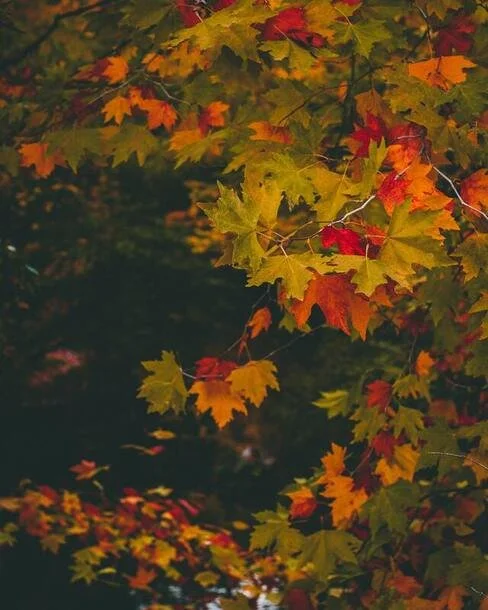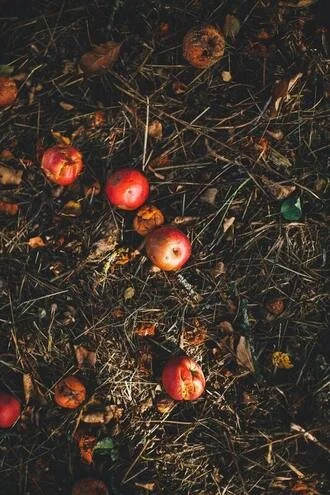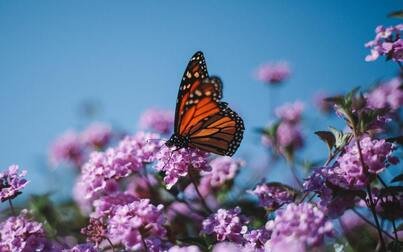An Autumn Song: Love your Leaves
Autumn Song
In the deep fall
don’t you imagine the leaves think how
comfortable it will be to touch
the earth instead of the
nothingness of air and the endless
freshets of wind? And don’t you think
the trees themselves, especially those with mossy,
warm caves, begin to think
of the birds that will come — six, a dozen — to sleep
inside their bodies? And don’t you hear
the goldenrod whispering goodbye,
the everlasting being crowned with the first
tuffets of snow? The pond
vanishes, and the white field over which
the fox runs so quickly brings out
its blue shadows. And the wind pumps its
bellows. And at evening especially,
the piled firewood shifts a little,
longing to be on its way.
~ Mary Oliver
Let the leaves touch the earth this year by choosing to leave them on your lawns and yards. Fall is the perfect time to start composting. Read below to find out why!
In fall, leaves from deciduous trees coat the ground. This layer of organic matter represents an opportunity to build your garden’s soil, protect your lawn during the colder months, and create habitat for pollinators. In order to take full advantage of the leaves in your yard, try leaf composting.
The Benefits of Leaf Compost
As leaves decompose, they form a beneficial soil amendment which can increase the health of your garden or lawn in a number of ways.
Leaf compost increases soil porosity, which means more room for water and air to flow around plants’ roots.
Compost also raises the soil’s fertility by adding nutrients like carbon and nitrogen.
The dark, rich, organic matter left by the decomposition of leaves retains moisture, loosens compacted earth, and increases the particle size of your garden soil.
Leaf compost can be used as a mulch or top dressing to repel weeds from your garden.
Composting leaves isn’t just good for your garden; this single act benefits the whole Asheville community.
When residents of the City of Asheville bag their leaves and place them on the roadside, the city expends resources collecting and processing these leaves. This means taxpayer money must be allocated to removing a beneficial resource, which could enhance many backyards instead of ending up at an industrial composting site. The collection, transportation, and processing of leaf compost uses fossil fuels, contributing to greenhouse gas emissions.
Leaves bagged up and placed by the road may end up tipping into storm drains, where they slow or stop the flow of water. By clogging neighborhood storm drains, these leaves can lead to roadside flooding. When the leaves do pass through the drains, they enter nearby streams. Huge amounts of leaves pour into the waterway from neighborhood storm drains. This leads to eutrophication: an overload of nutrients in the water that causes oxygen depletion and, in extreme cases, large-scale fish kills or algae blooms.
Remember: If you must bag your leaves for curbside pickup, use paper bags! Using paper bags smooths out the whole composting process because paper bags are compostable, just like leaves.
How to Compost Leaves
Simple leaf composting takes less work than creating a traditional compost.
In traditional compost, you fill a bin with 3 parts brown material to 1 part green material. Brown material is primarily Carbon; it’s the building block of life on earth. The green material (ex. kitchen scraps and yard trimmings) contributes Nitrogen to the compost mix. Nitrogen-rich “greens” have a habit of getting stinky and attracting pests when not properly mixed with Carbon-rich “browns.” If you already have a compost pile going, fallen leaves are a valuable “brown” material used to balance the ratio of Carbon to Nitrogen. Composting isn’t hard, but leaf composting is even easier.
Just add leaves.
Pile your leaves in a corner of the yard for an easy, out-of-the-way option. Thanks to natural decomposing microbes, you can rake your leaves into a pile and forget about them. Once the winter is over, the once large pile will be a small mound of nutrient-rich humus.
Construct a bin using wire mesh or wood for more control. If you like a tidier look, try a bin. It’s best to stir the leaves once a month or so in order to promote aeration, which helps microbes to decompose the material. A basic compost bin is 3 square feet, large enough to hold moisture and heat, but not so large as to be unmanageable.
Leave the leaves where they fall. This third option offers pollinators a safe place to overwinter and can help protect your lawn from extreme cold. You can also use a mower to chop up leaves. These leaf bits are more easily decomposed and will let more sunlight through to your lawn. Keep in mind, leaf bits won’t protect pollinators nearly as well as whole leaves.
Leaf composting couldn’t be simpler, but the benefits are great. You’ll save streams eutrophication, give pollinators habitat, build healthy soil in your own garden, and avoid burning unnecessary fossil fuels. Asheville GreenWorks provides easy-to-assemble compost bins to house your leaves this fall. Reach out to us on Facebook, Instagram, or through our website to learn more about composting in your backyard!
Happy Fall!
This article is written for the residents of the City of Asheville in partnership with the City of Asheville.



